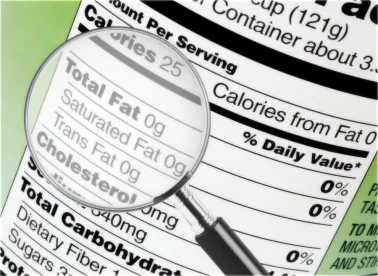The seventh and final component of the FDA Food Safety Modernization Act was finalized and published on May 27, 2016. The Intentional Adulteration Final Rule requires food companies to identify vulnerabilities within their food process with a goal of preventing intentional contamination of the food supply that would lead to wide-scale harm.
The rule applies to both domestic and foreign companies that are required to register with the FDA as “food facilities” under the Federal Food, Drug, and Cosmetic Act. Because the rule is designed to primarily cover large companies with a wide reach to many people, smaller companies and farms are not required to comply. To qualify for the exemption, smaller companies are required to provide to the FDA documentation to demonstrate that the business is small.
The rule requires the food facilities to complete and maintain a written food defense plan. This plan is designed to assess potential vulnerabilities to intentional contamination of the food supply. This is similar to the Hazard Analysis Critical Control Point system, which is widely used within the food industry for identification, evaluation, and control of food safety hazards.
The food facilities must identify and implement mitigation strategies to address any vulnerabilities that are found, establish a food defense monitoring procedure and corrective actions, verify the procedures and corrective actions are working, and ensure all relevant employees receive the proper training and maintain records. A reanalysis is required every three years or when certain criteria are met.
-
Vulnerability Assessment: Each point, step, or procedure in the facility’s process must be evaluated for the severity and scale of the potential impact on public health, degree of physical access to the product, and ability to successfully contaminate the product.
-
Mitigation Strategies: Requires steps to be taken to ensure proper implementation of each mitigation strategy. Food facilities will be given flexibility to establish actions that are appropriate to their operation and product.
-
Monitoring: Food facilities must establish and implement procedures for monitoring the mitigation strategies. This includes how often they will be performed.
-
Corrective Actions: Requires a response if the mitigation strategies are not properly implemented.
-
Verification: In order to ensure that monitoring is being conducted and appropriate decisions about any corrective actions are being made.
-
Training and Recordkeeping: Food facilities must ensure all employees that will work in vulnerable areas receive the necessary training. Additionally, the food facilities must maintain records for food defense monitoring, corrective actions, and verification activities.
Food manufacturers that are not designated as a “small business” or a “very small business” must comply with the new rule within three years after publication (i.e. May 27, 2019). “Small businesses” employing fewer than 500 persons must comply within four years after publication. A “very small business” which averages less than $10,000,000 per year during the three-year period preceding the applicable calendar year in sales of human food plus the market value of human food manufactured, processed, packed, or held without sale, is exempt and must provide documentation sufficient to show their small status. Very small business have five years to comply.
The rule was initially proposed in December 2013. The final rule takes into consideration over 200 comments from the food industry, government regulatory partners, and consumer advocates. With the finalization of the Intentional Adulteration rule, the FDA has finalized all seven of the rules that implement the Food Safety Modernization Act. The previous rules are: the Preventive Controls rules for human food and animal food, the Produce Safety rule, the Foreign Supplier Verification Program rule, the Accreditation of Third-Party Certification rule, and the rule on Sanitary Transportation of Human and Animal Food.
The FDA has published a helpful explanatory diagram of the Intentional Adulteration rule, found here.




 />i
/>i

